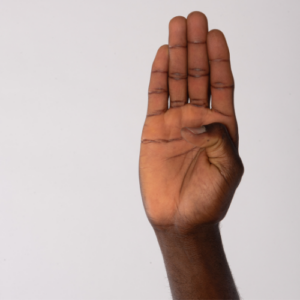forehead. It's like the CEO of your brain, responsible for logical reasoning, decision-making, and thoughtful analysis. When your mind is calm and collected, the prefrontal cortex is in charge, and you feel like you're in control, just as the palm of your hand is steady and composed.
The Fingers: Emotional Responses and the Amygdala Now, let's turn our attention to the fingers of our hand. They symbolize our emotional responses to the world around us. Deep within your brain lies the amygdala, a small, almond-shaped structure that plays a vital role in processing emotions. Think of it as the emotional center of your brain.
In challenging or threatening situations, the amygdala gets activated like the fingers curling inward. This activation triggers emotional responses, such as fear, anger, or sadness. The amygdala sends signals to other parts of the brain, influencing our thoughts and behaviors.
Flipping the Lid: When Emotions Overwhelm Rationality In certain circumstances, especially when we feel overwhelmed or highly stressed, our emotional responses can overpower our rational thinking. This is when the lid metaphorically "flips," disrupting the connection between the prefrontal cortex (the palm) and the amygdala (the fingers).
When the lid is flipped, our emotions can take over, clouding our judgment and making it challenging to think clearly or make rational decisions. It's as if the hand is no longer working harmoniously, and our emotional responses dominate the scene.
Putting the Lid Back On: Regaining Emotional Balance The good news is that, just as we can put the lid back on a jar, we can regain control over our emotions and restore rational thinking. By engaging in activities that promote self-regulation and emotional well-being, we can "put the lid back on."
Practices such as deep breathing, mindfulness, or finding a quiet space to reflect help calm the amygdala and reestablish the connection between the prefrontal cortex and the emotional centers. When this connection is restored, our thinking becomes clearer, and we can effectively manage our emotions.
Understanding the Hand Model of the Brain offers valuable insights into the intricate relationship between our emotions and rational thinking. By recognizing when our lid flips and implementing strategies to regain control, we can navigate life's challenges with greater emotional intelligence.
Remember, developing emotional resilience is an ongoing process. With practice and self-awareness, we can enhance the connection between our prefrontal cortex and amygdala, promoting emotional well-being and thoughtful decision-making. So, the next time you find yourself overwhelmed by emotions, visualize the Hand Model of the Brain, and take proactive steps to restore balance and regain control over your mind's marvelous mechanism.

